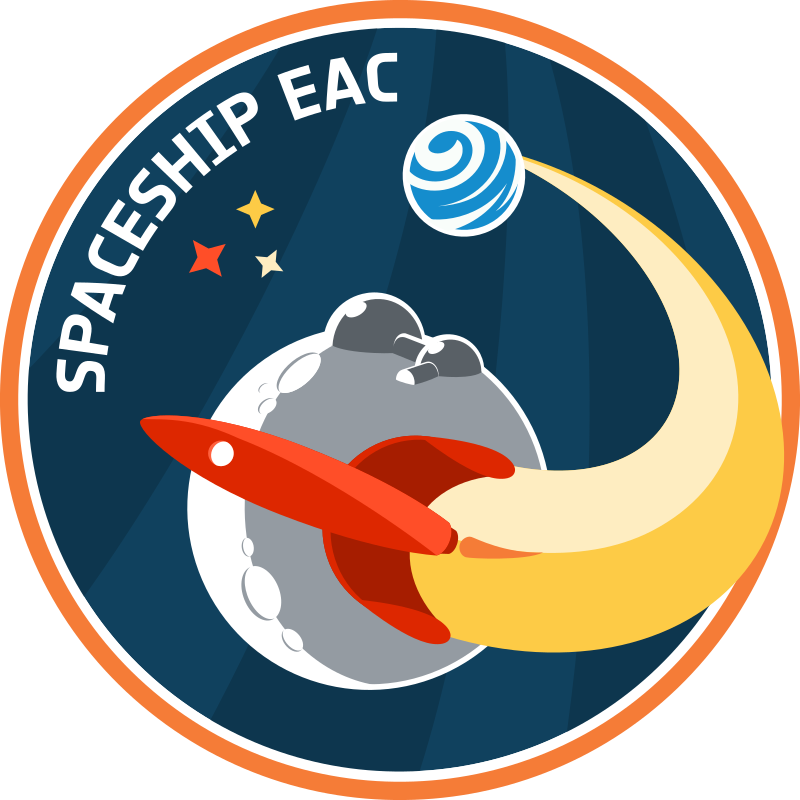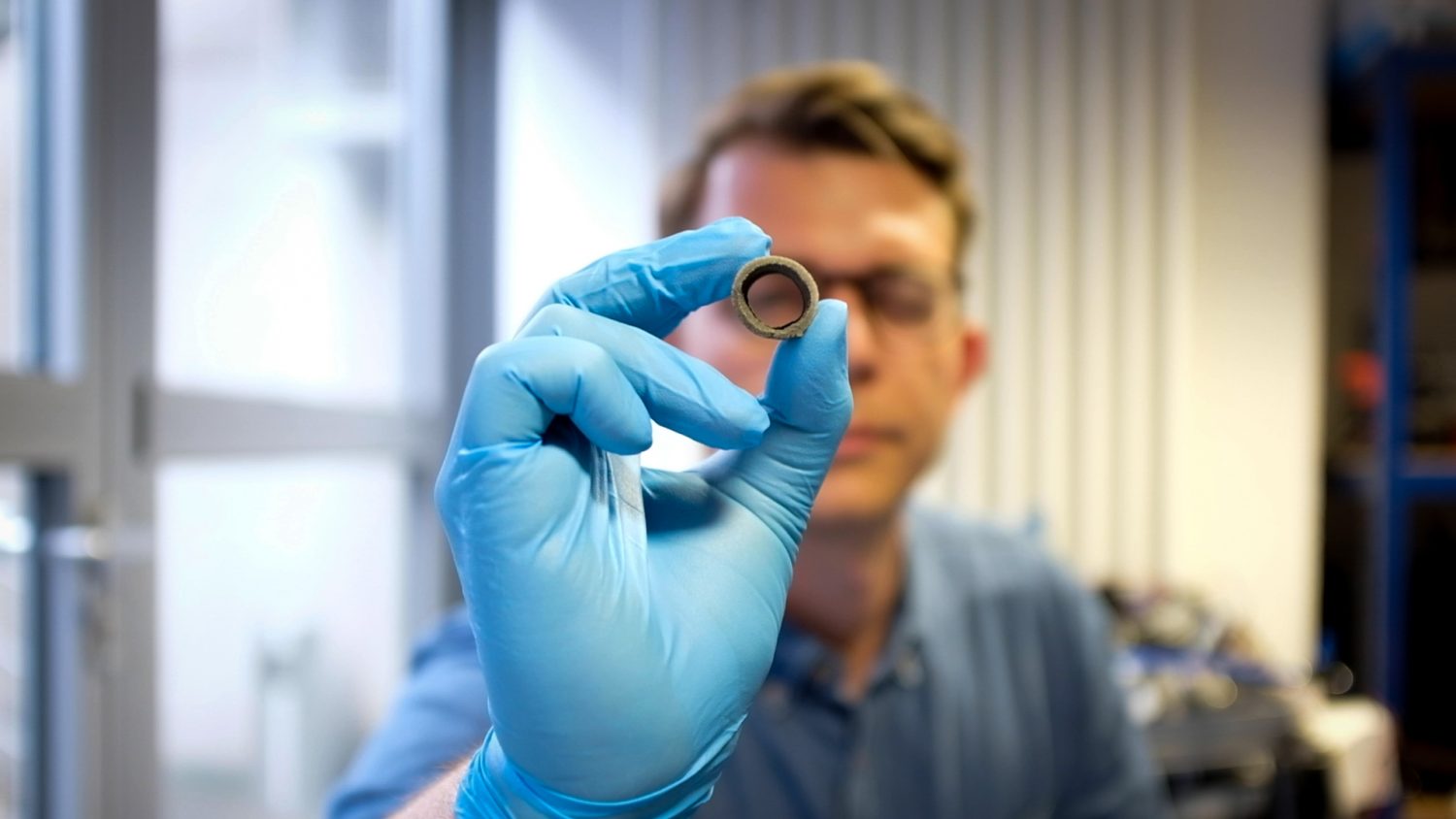In-situ resource utilisation (ISRU) will be vital in establishing a sustainable human presence on the Moon, as it involves using local resources rather than having to transport all the supplies from Earth.
Due to his background in chemical engineering and material science, Billy is working as part of Spaceship EAC’s advanced manufacturing team. This team investigates how to use what is already plentiful on the Moon – lunar regolith, or Moon dust – to manufacture bricks and more complex parts for building.
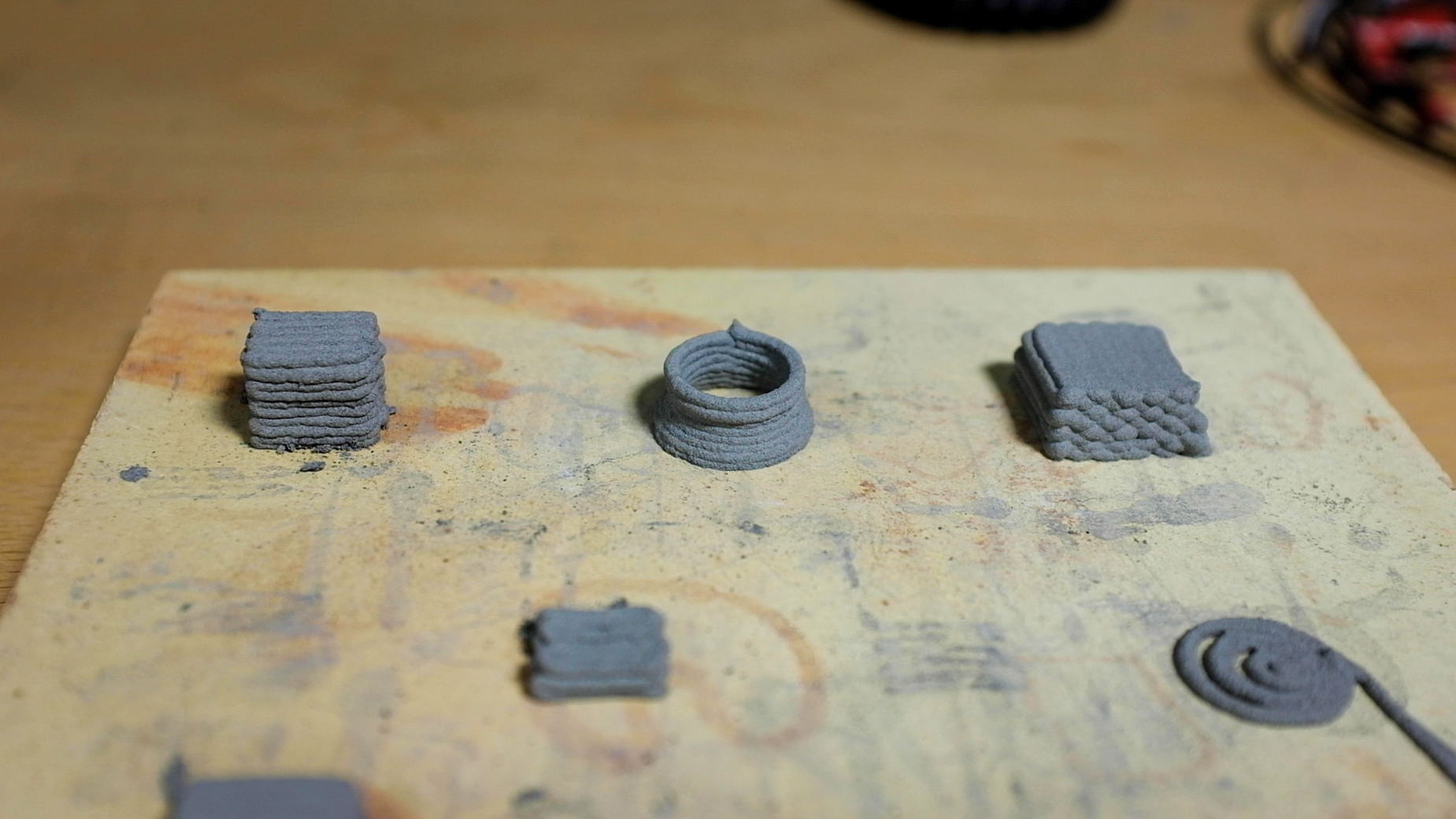
Additively manufactured (3D printed) objects consisting mainly of lunar regolith simulant. ESA-B.Grundström
Mixing Moon dust
Regolith is plentiful on the Moon’s surface, and ESA has developed many methods for using this material to realise sustainable exploration in the future. To complement this, the team is investigating how regolith could be further processed to increase its stability with the help of their very own regolith simulant EAC-1A.
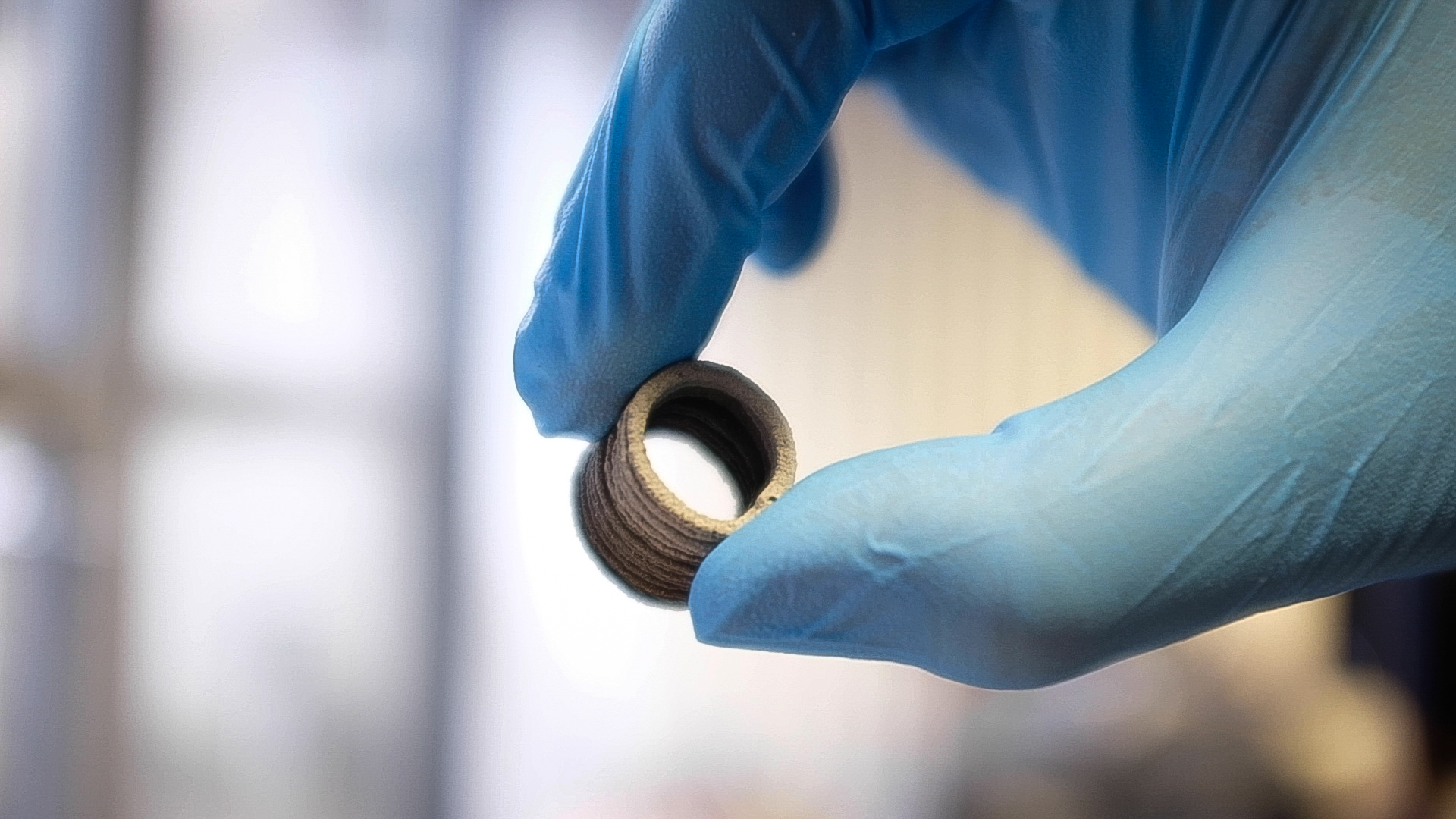
Hollow cylinder 3D printed using the lunar regolith simulant EAC-1A. ESA-B.Grundström
Using various heating methods, or by combining it with different additives, the goal is to produce a strong construction material for 3D printing on the Moon, that could one day be as robust as concrete.
No plastic printing
The first material that comes to mind when most people think of 3D printing is plastic filament. However, Billy’s project is based on a completely new approach involving bio-based polysaccharides derived from algae.
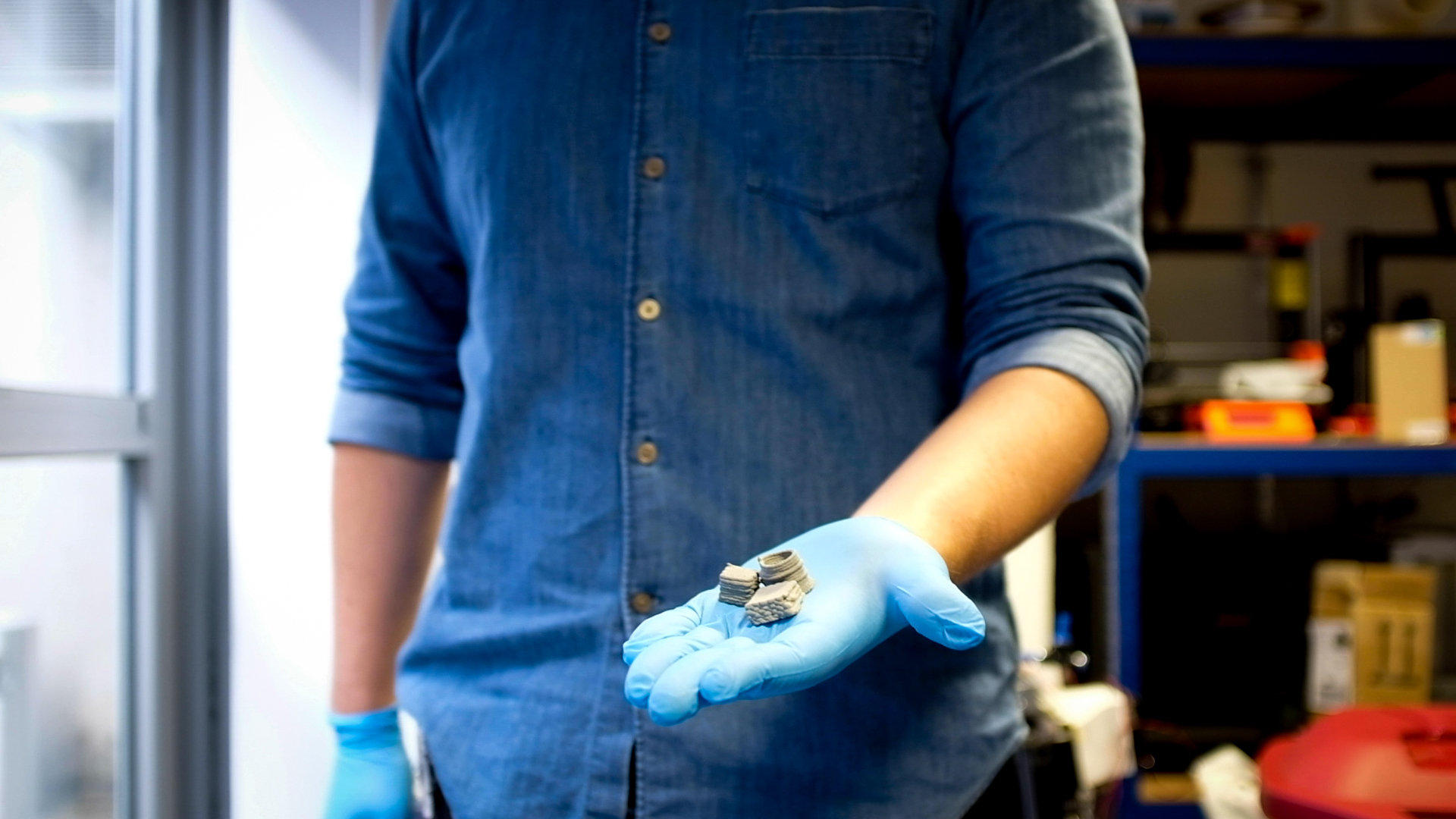
Dried objects showcasing different geometries that have been 3D printed at EAC using this new approach. ESA-B.Grundström
Though exciting, Billy says the innovative nature of his project has also been its biggest challenge. “It required lots of experimentation and customisation of equipment to figure out what works and what doesn’t,” he explains.
Step by step, he was able to develop a prototype recipe for the printer’s ”ink”. This paste is made of regolith simulant, water and the algae-based bio-additive. It’s showing promising characteristics in initial testing in the lab and should now be further optimised for use in automated 3D printing.
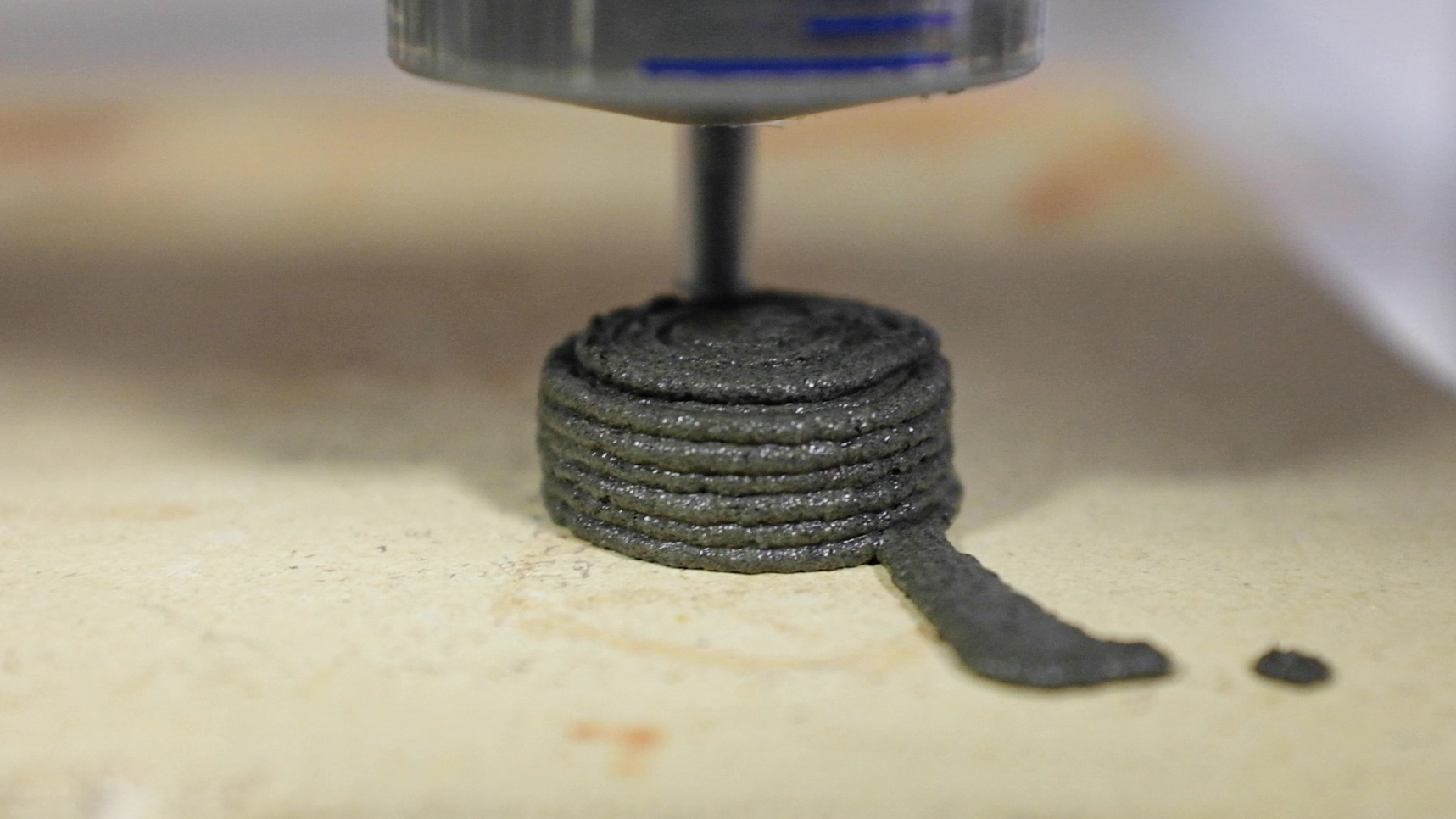
Solid cylinder, image taken during production. ESA-B.Grundström
In the future, Billy says the algae used for his paste could be grown in bioreactors on the Moon. Using CO2 exhaled by humans alongside available water and sunlight could enable a fully integrated production system, reducing the need for complex and costly transportation from Earth.
The key to success was to keep it simple: ‘’Paradoxically, I somewhat had to try to find a “low-tech” solution to a high-tech situation,’’ Billy adds.
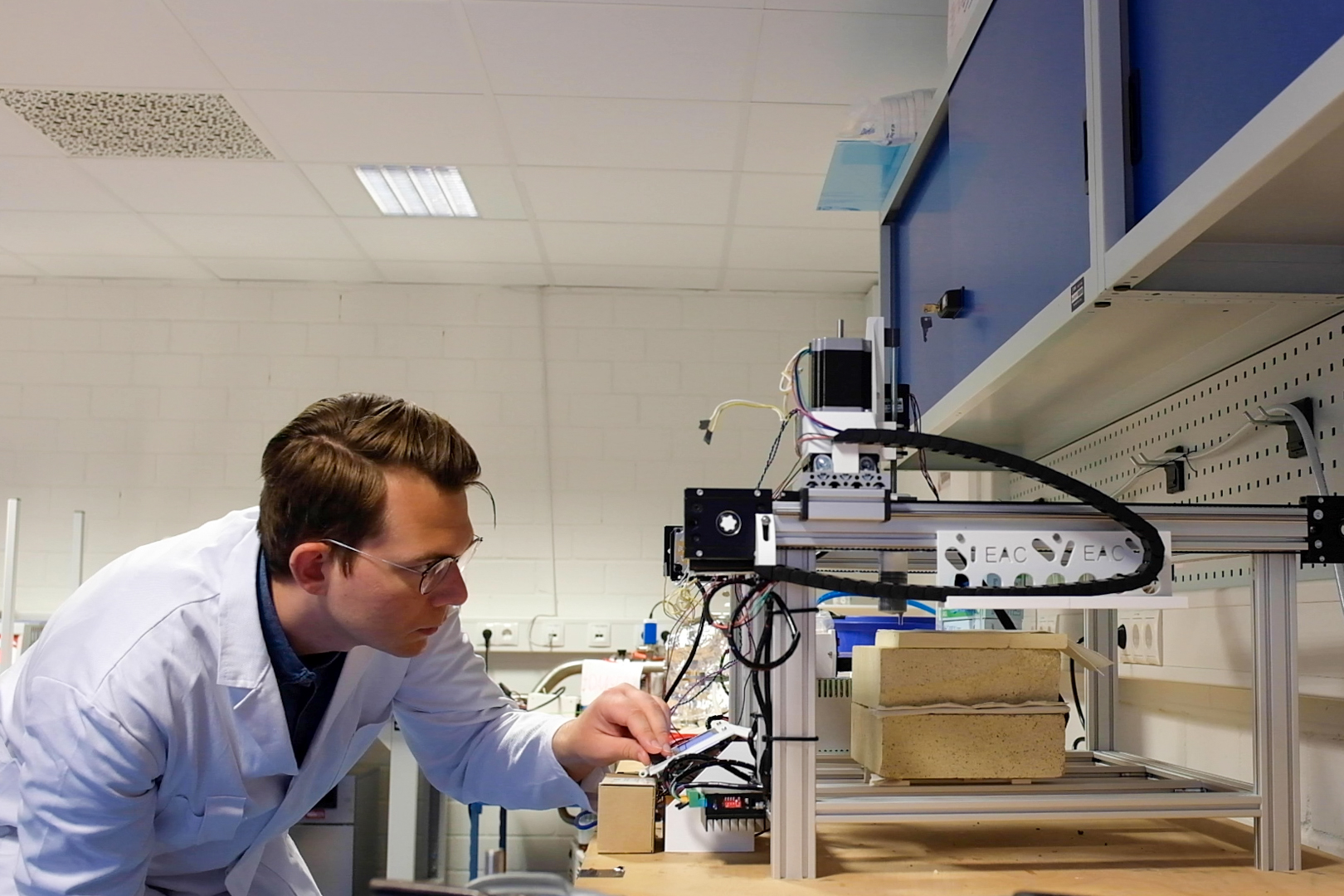
Operating the in-house developed 3D printer to set printhead position before starting a new print. ESA-B.Grundström
He says the project also shows how the development of solutions critical for space exploration can inspire applications on Earth. ‘’Many of the problems we face in space exploration require circular solutions as we need to reuse and recycle what we have at hand. This circular mind-set is also beneficial when working on solutions to Earth-based problems, to avoid placing too much strain on available resources.’’
Billy says he’s proud to contribute his ideas as he looks forward to the future of Moon exploration and the development of these techniques. “It would of course be exhilarating if something based on my project were to be used to manufacture structures on the Moon. However, to advance takes the work of many over an extended period of time. I can’t wait to see what methods come next.”
Find out more about Spaceship here.


